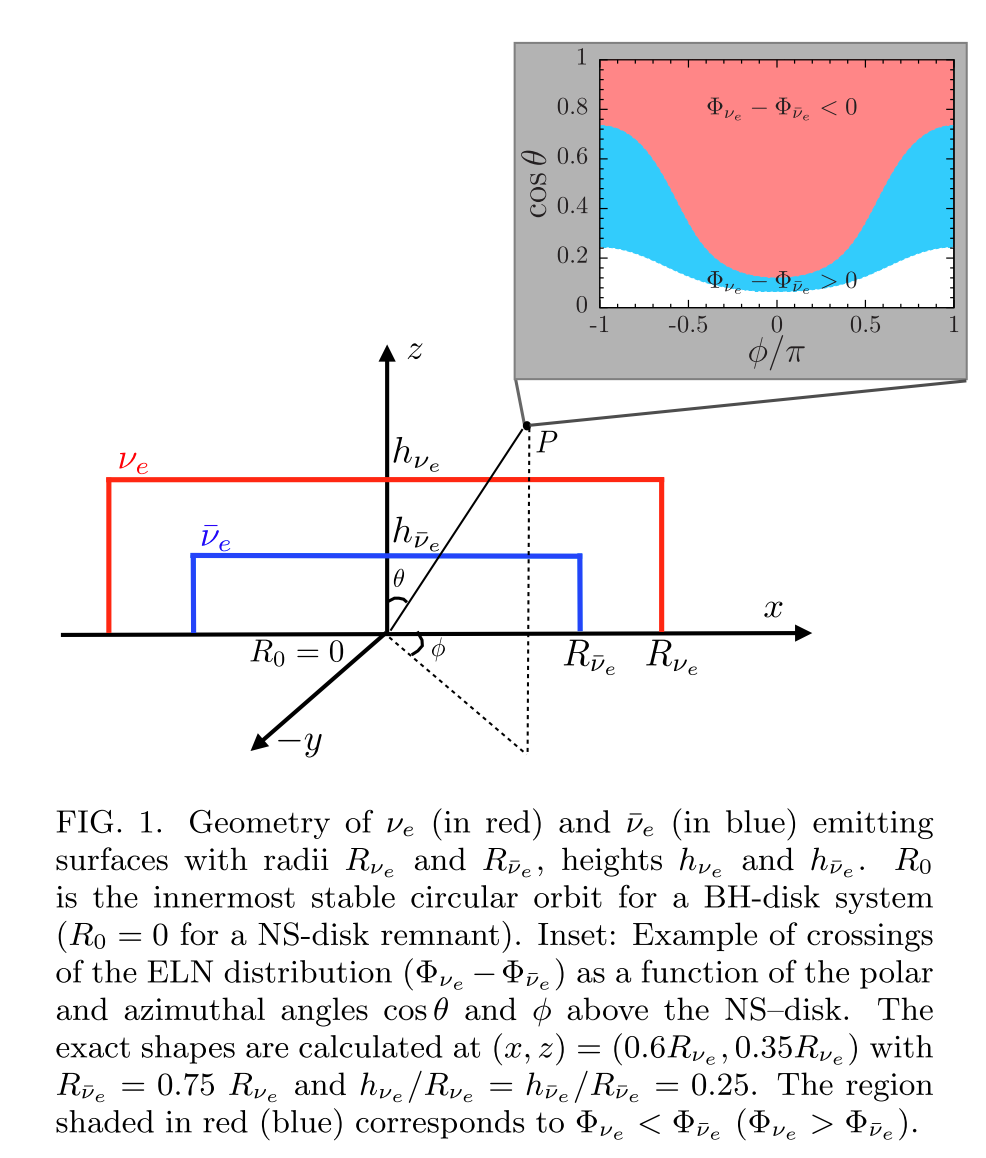1.2.9. Discworld¶
Several complicated astrophysical environments can be simplified to discworlds.
1.2.9.1. Neutron Star Mergers and Accretion Discs¶
In the paper [Wu2017], they discussed the breaking of mirror symmetry.
Mirror Symmetry
Mirror symmetry in [Wu2017] is the symmetry of reflection with respect to y axis, i.e., symmetry for coordinate \(x\) and \(-x\).

Fig. 1.169 Geometry in [Wu2017]. Mirror symmetry corresponds to the symmetry of spectrum in \(\phi\). The ELN (electron lepton number) distribution is symmetric for \(\phi\to -\phi\).¶
In the polarization tensor, \(v^1\) is related to the so called Mirror symmetry. We expect the dispersion relation related to \(\Pi_{22}\) to be related to the mirror symmetry.
1.2.9.2. References and Notes¶
- Wu2017(1,2,3)
Wu, M.-R., & Tamborra, I. (2017). Fast neutrino conversions: Ubiquitous in compact binary merger remnants, 1–7. arXiv:1701.06580.